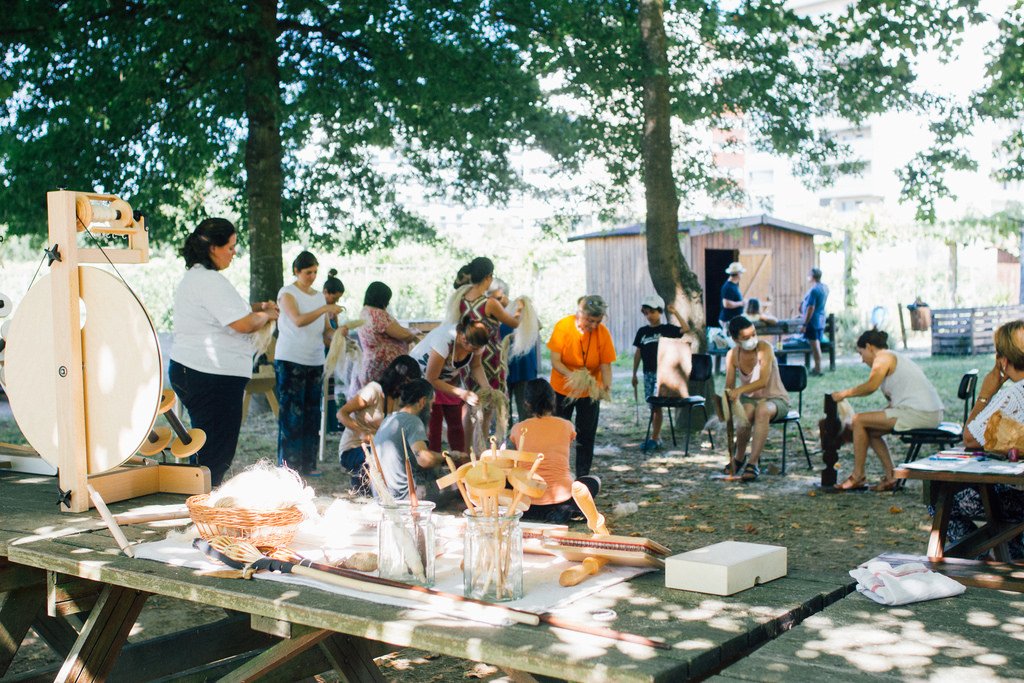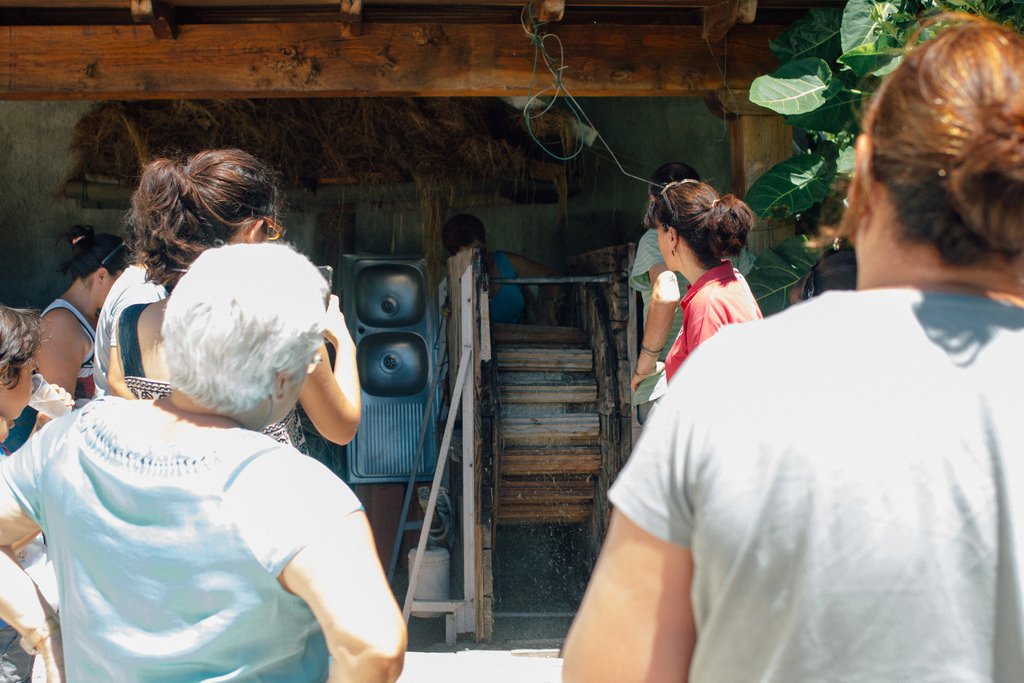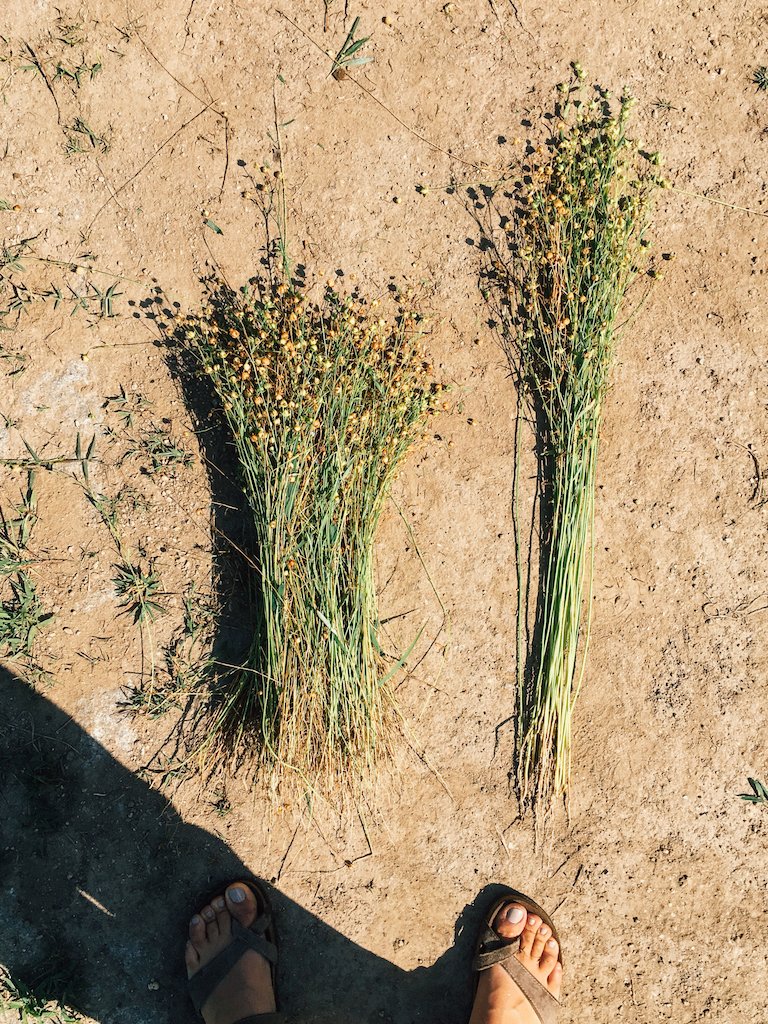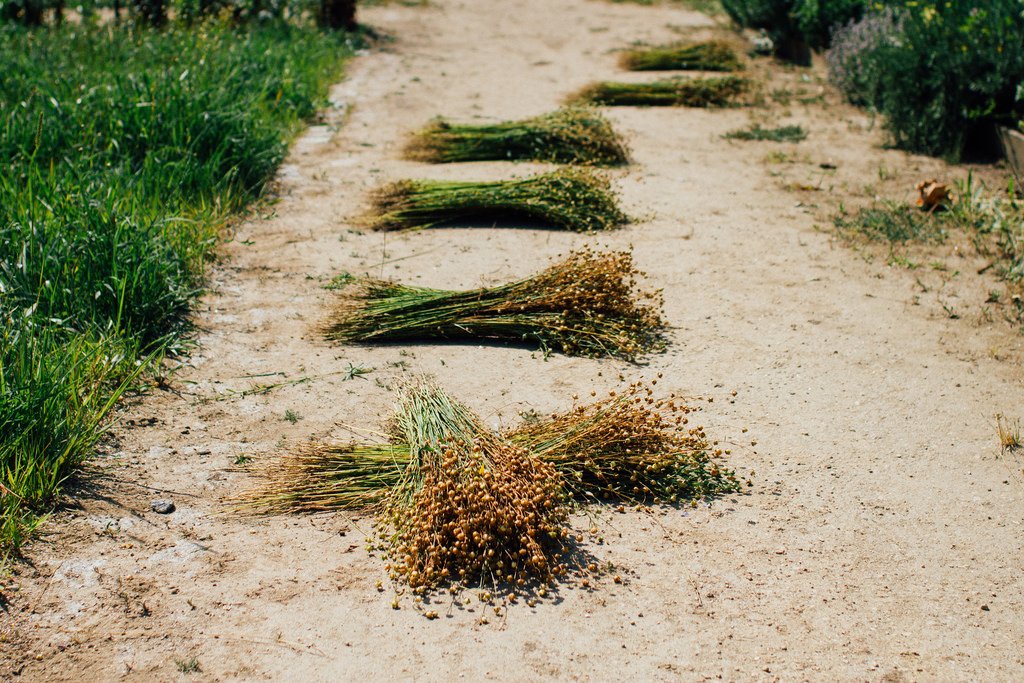Blog

The Flax long course - final day
We sowed, saw it grow, harvested, rippled, retted, dried and ground our own flax in a two and a half months time. This was the easy part of flax growing, the hardest one was yet to come and that is the one that demands us to scutch, comb and spin our flax.

Breaking the flax
After retted and dried, it was time to take the flax we grew at Parque da Devesa to be ground.

The first indigo harvest
This is the first real harvest of the Japanese indigo being grown in the Parque da Devesa Urban Gardens! Actually, the ideal time for this first harvest would have been a month ago, well before the flowers started to appear, but at that time we were at the peak of the Flax cycle and the indigos had to wait.


On the retting of flax (pt1)
After the harvest, comes the retting, the process by which we separate the flax fibers from the woody part of the stem, or “edge”, as it is more often called by those who traditionally work with flax.

Artificial selection
On Harvest Day, Sara went around our ligneous plantation and selected the tallest plants, which are therefore the most desirable for those who grow flax for fiber, so that we could separate their seed from the rest and, next year, grow a small crop separately from this selection.

Flax harvest at Parque da Devesa
The last few days have been intense and especially dedicated to flax, which has ripened quickly in the heat and is ready to harvest. The variety we are growing, Galego Flax, has a characteristic that is more common in wild flax and which makes it absolutely essential to harvest at the right time.

Planting the dye plants
In the urban gardens of Parque da Devesa, right next to our flax field, some dyeing plants are already in the ground—plants that can be used for dyeing, among other things. We transplanted Japanese Indigo, Woad, Madder, Safflower, Dyer’s Chamomile, Egyptian Stars (or dark little daisies), Marigolds, Tunic Carnations, and Yarrow.

Learning to grow flax - the beginning
It was beautiful, last saturday, spending the morning with more than 20 people eager to learn how to grow their own flax and process it into linen. This day was the beginning of our flax production course, that will last until mid July, and that I'm coordenating thanks to the support of Vila Nova de Famalicão city, through the Museum of the Textile Industry and the Parque da Devesa

